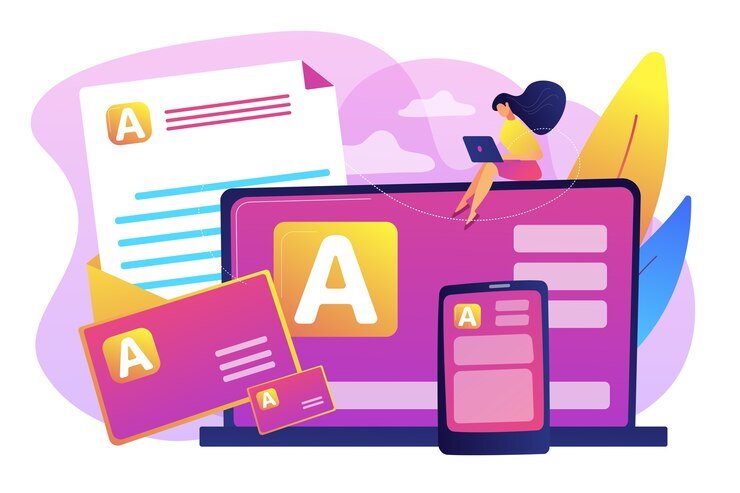Introduction
In today’s fast-paced digital world, accessibility and efficiency are paramount. Whether it’s in education, business, or personal endeavors, having easy access to accurate information is crucial. One tool that plays a significant role in achieving this is transcript extensions. These extensions, often integrated into various software and platforms, offer users a plethora of benefits, from improving accessibility for individuals with disabilities to enhancing productivity for professionals. In this article, we delve into the world of transcript extensions, exploring their importance, functionalities, and impact across different domains.
Understanding Transcript Extensions
Transcript extensions are software add-ons or features designed to transcribe audio and video content into text format. This transcription process utilizes advanced speech recognition technology to convert spoken words into written text accurately. Once transcribed, the text is typically displayed alongside the audio or video content, allowing users to read along as they listen or watch.
Importance of Transcript Extensions
Accessibility: One of the primary advantages of transcript extensions is their ability to enhance accessibility for individuals with hearing impairments. By providing accurate transcriptions of audio and video content, these extensions ensure that everyone, regardless of their hearing abilities, can access and comprehend the information presented.
Improved Learning Experience: In educational settings, transcript extensions can significantly benefit students by providing them with additional support for lectures, presentations, and instructional videos. Students can follow along with the text while listening to the audio, reinforcing comprehension and retention of key concepts.
Enhanced SEO: From a business perspective, transcript extensions contribute to improved search engine optimization (SEO). Transcribing audio and video content generates text that can be indexed by search engines, making the content more discoverable to online users. This increased visibility can drive traffic to websites and boost overall digital presence.
Efficiency and Productivity: Professionals across various industries can leverage transcript extensions to streamline their workflows and boost productivity. Transcribed meetings, interviews, and presentations enable quick reference and easy retrieval of information. Additionally, text-based transcripts facilitate content analysis, keyword identification, and data extraction, saving time and effort in information processing.
Functionalities of Transcript Extensions
Accurate Transcription: Transcript extensions utilize advanced algorithms and machine learning techniques to ensure high levels of accuracy in transcribing audio and video content. While no transcription tool is flawless, continuous improvements in speech recognition technology have significantly enhanced the precision of transcript outputs.
Customization Options: Many transcript extensions offer customization options to meet the specific needs of users. This includes the ability to adjust transcription speed, choose preferred languages, and modify formatting styles. Such flexibility allows users to tailor the transcription experience according to their preferences and requirements.
Integration with Existing Platforms: Transcript extensions are often designed to seamlessly integrate with existing software and platforms, including video conferencing tools, content management systems, and learning management systems. This integration enables users to access transcription features directly within their preferred applications, enhancing convenience and usability.
Collaboration and Sharing: Transcribed content can be easily shared and collaborated on with others, promoting efficient communication and knowledge sharing within teams and communities. Many transcript extensions offer features for annotating transcripts, adding comments, and sharing links to specific sections of the transcribed content.
Impact Across Different Domains

Education: In educational institutions, transcript extensions support diverse learning needs by providing accessible content for students with disabilities and enhancing the overall learning experience. Transcribed lectures and educational videos facilitate note-taking, revision, and comprehension for students across various disciplines.
Business and Corporate Communication: In the business world, transcript extensions streamline communication processes by transcribing meetings, conferences, and training sessions. These transcripts serve as valuable records for documentation, reference, and follow-up actions, ensuring clarity and accountability in organizational communication.
Media and Entertainment: In the media and entertainment industry, transcript extensions play a crucial role in content creation, subtitling, and localization. Transcribed audio and video content can be translated into multiple languages, making it accessible to global audiences and expanding the reach of media productions.
Legal and Compliance: Legal professionals leverage transcript extensions to transcribe court proceedings, depositions, and client meetings accurately. These transcripts serve as official records and aid in legal research, case preparation, and compliance documentation.
Conclusion
Transcript extensions represent a powerful tool for enhancing accessibility, efficiency, and productivity across various domains. By providing accurate transcriptions of audio and video content, these extensions enable individuals to access information more easily, improve learning outcomes, and streamline communication and workflow processes. As technology continues to evolve, transcript extensions will play an increasingly significant role in shaping the way we interact with and utilize digital content, ultimately contributing to a more inclusive and interconnected society.
Frequently Asked Questions (FAQs) About Transcript Extensions
1. What are transcript extensions?
Transcript extensions are software add-ons or features designed to transcribe audio and video content into text format. These extensions utilize advanced speech recognition technology to accurately convert spoken words into written text, which is then displayed alongside the original audio or video.
2. How do transcript extensions work?
Transcript extensions work by analyzing audio or video recordings and identifying spoken words using sophisticated speech recognition algorithms. Once transcribed, the text is displayed synchronously with the audio or video content, allowing users to read along as they listen or watch.
3. What are the benefits of using transcript extensions?
Transcript extensions offer several benefits, including:
- Accessibility: They make audio and video content accessible to individuals with hearing impairments by providing accurate transcriptions.
- Improved Learning Experience: Students can benefit from transcriptions of lectures and instructional videos, enhancing comprehension and retention of key concepts.
- Enhanced SEO: Transcribing content improves search engine optimization by making it more discoverable to online users.
- Efficiency and Productivity: Professionals can save time and effort by quickly referencing transcribed meetings, interviews, and presentations.
4. Are transcript extensions accurate?
While no transcription tool is flawless, transcript extensions strive to provide high levels of accuracy through continuous improvements in speech recognition technology. Factors such as audio quality, speaker accents, and background noise can impact accuracy, but advancements in algorithms have significantly improved transcription precision.
5. Can transcript extensions be customized?
Yes, many transcript extensions offer customization options to meet users’ specific needs. Users can adjust transcription speed, choose preferred languages, and modify formatting styles according to their preferences and requirements.
6. How can transcript extensions be integrated into existing platforms?
Transcript extensions are designed to seamlessly integrate with various software and platforms, including video conferencing tools, content management systems, and learning management systems. Integration enables users to access transcription features directly within their preferred applications, enhancing convenience and usability.
7. In which domains are transcript extensions commonly used?
Transcript extensions are used across various domains, including education, business and corporate communication, media and entertainment, legal and compliance, and more. They support diverse needs such as accessible learning, streamlined communication, content creation, and legal documentation.
8. Are transcript extensions suitable for international audiences?
Yes, transcript extensions are suitable for international audiences as they can transcribe content in multiple languages. Transcribed content can be translated and localized to make it accessible to global audiences, expanding the reach of media productions, educational materials, and business communications.
9. Can transcribed content be shared and collaborated on?
Yes, transcribed content can be easily shared and collaborated on with others. Many transcript extensions offer features for annotating transcripts, adding comments, and sharing links to specific sections of the transcribed content, promoting efficient communication and knowledge sharing within teams and communities.
10. How do transcript extensions contribute to accessibility and inclusivity?
Transcript extensions play a crucial role in enhancing accessibility and inclusivity by providing accurate transcriptions of audio and video content. They ensure that individuals with hearing impairments can access information more easily and participate fully in educational, professional, and recreational activities, contributing to a more inclusive society.
These FAQs provide insights into the functionality, benefits, and applications of transcript extensions, highlighting their importance in various domains and their contribution to accessibility, efficiency, and inclusivity.




